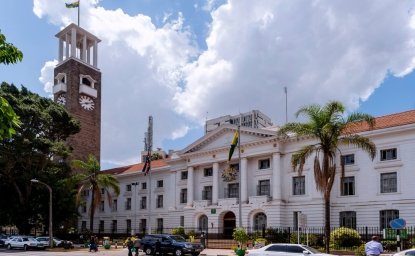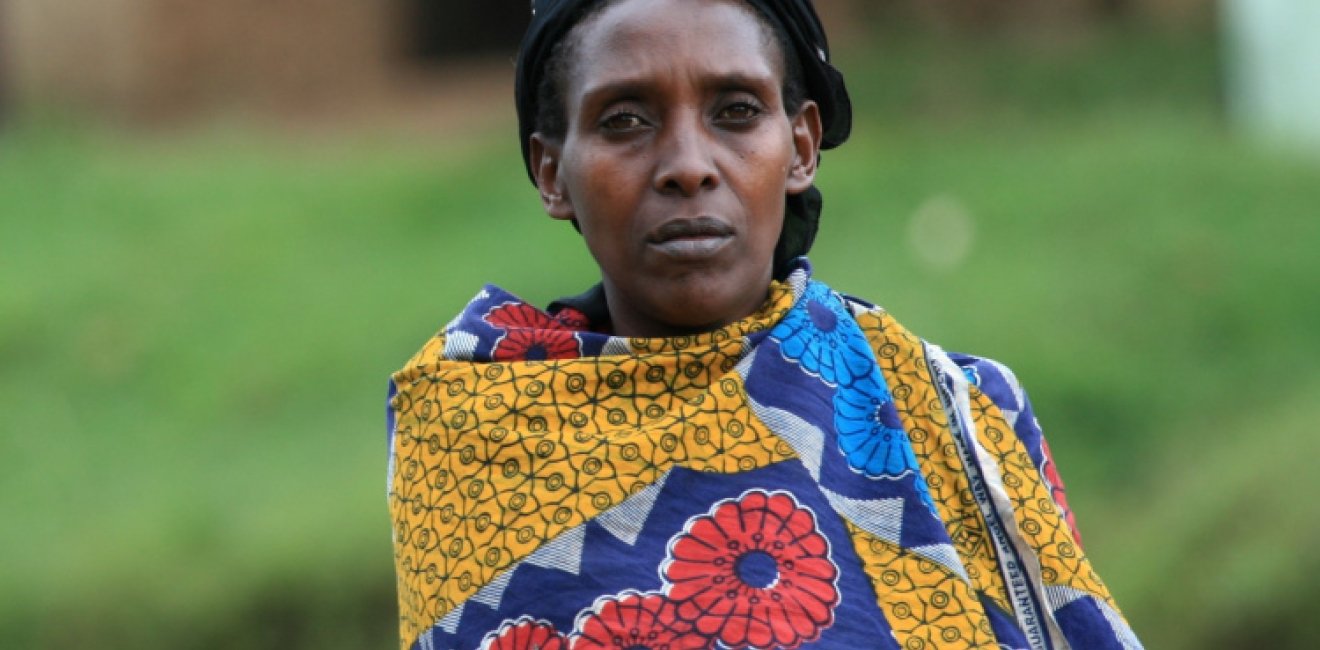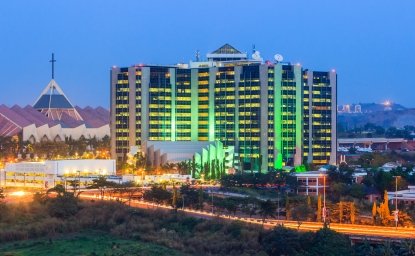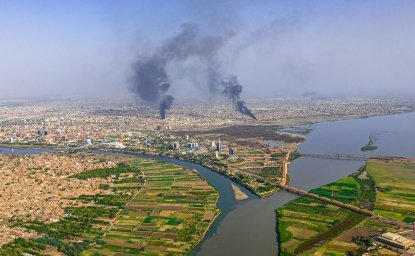
A blog of the Africa Program
In 2022, the Congolese army, the Forces Armées de la République Démocratique du Congo (FARDC), and the United Nations Organization Stabilization Mission in the Democratic Republic of the Congo (MONUSCO) conducted joint operations against the March 23 Movement (M23) which resulted in 32,000 Congolese fleeing the DRC through the Nyakabande transit center and into Uganda. The M23 then regrouped and attacked along the DRC-Uganda border, forcing more refugees to flee into Uganda. These displaced persons have since regularly moved between the Democratic Republic of the Congo (DRC) and Uganda due to recurring armed conflicts in DRC’s eastern provinces of Northern Kivu, Ituri, and Goma. This regular movement back and forth of refugees within and across borders is now often referred to as a transient refugee trend.
Transient refugees are people who seek refuge in another country but intend to return home once the conditions that forced their displacement improve, which frequently results in a short stay in a host country. This new transient refugee migration pattern is challenging host border communities and Uganda’s refugee policies, which were developed to accommodate a longer-term refugee population. To better understand this new transient refugee trend, my colleague, Acidri Malunga Emmanuel and I conducted 45 interviews with refugees, immigrant officers, local government, community leaders, and village leaders between October and November 2022. From our interviews, we found that the trend is increasing competition and conflict for resources, challenging Uganda’s refugee policies, and straining local social services. In our recent article for the Horn of Africa Bulletin, we argue that the transient refugee trend requires a shift in the current Uganda refugee policy in order to reduce the potential for conflict and promote peace.
...Conflicts between host communities and refugees, where newly arrived refugees have conflicted with host communities over competition for limited resources and an increased strain on the local social services such as healthcare, education, and employment opportunities.
Uganda’s Refugee Policies Prior to Transience
Uganda has been applauded for its progressive refugee policy. Uganda’s approach to refugees stands in sharp contrast to other refugee-hosting countries in the region, where refugees are required to live in designated areas with limited socioeconomic rights and liberties. Refugees in Uganda are perceived as contributors to socioeconomic development rather than as a burden on society. There have been two pieces of Ugandan legislation adopted to protect refugees: the 2006 Refugee Act and the 2010 Refugee Regulations. Both extend to refugees the rights to education, free movement and expression, land for resettlement, basic healthcare services, to live in the local communities, and to work for self-sustenance.
These rights are further elaborated upon in Uganda’s Self-Reliance Strategy (SRS). Introduced in 1999 to strengthen refugee livelihoods through self-sustenance, the SRS aims to reduce refugees’ vulnerability to poverty and minimize their over-dependence on foreign aid. In 2016, the SRS was remodeled into the Refugee and Host Population Empowerment (ReHOPE) Strategy in order to explore more opportunities for the benefit of refugees and host communities and to create a link between humanitarian interventions and development interventions. This was mainly intended to ensure that humanitarian action is better integrated into Uganda’s long-term development approach and to include refugees in the development and implementation of Uganda’s National Development Plan.
The Driving Force Behind an Emerging Transient Refugee Trend
A combination of factors has driven refugees along the Uganda–Congo border into transience. Most significantly, conflicts between host communities and refugees, where newly arrived refugees have conflicted with host communities over competition for limited resources and an increased strain on the local social services such as healthcare, education, and employment opportunities.
Additionally, some refugees cite fear of the unknown as a factor that drives them into transience. Parents are afraid their children cannot cope with and adapt to new environments and integrate into new communities with different languages and cultures. French-speaking Congolese refugees with school-going age children often cite as their reason for remaining transient the inability of their children to quickly adapt to English, which is the official language and medium of instruction in all Ugandan schools.
Refugees also cite fear of the loss of property back home as a reason for their transience. Beyond known rebel groups in Eastern DRC, the country has a history of ethnic conflict, mostly spurred by socioeconomic marginalization, political inequalities, and the poor state-citizen relationship. Refugees forced to leave their country as a result of these ethnic wars are more likely to become transient as they maintain hope they can still recover what they left behind (land, livestock, and natural resources).
Why Should We Care About This New Migration Trend?
This new migration trend in the Horn of Africa has posed challenges to host border communities and the applicability of Uganda’s previously effective refugee policies. However, new and updated measures are now being applied to address the transience challenge. For example, the Ugandan government has committed to several important reforms and measures:
-
The decommissioning of the Nyakabande transit camp, where Congolese refugees are accommodated on arrival;
-
Appealing to humanitarian organizations to incorporate transient refugees into their work plan, and;
-
Coordinating with the Office of the Prime Minister (OPM) to provide ready transport at the border to convey refugees straight to the settlements, upon arrival.
Despite these ambitious efforts, none of the measures has proven to be a permanent solution to transience at the Uganda-Congo Bunagana Border. There is a need to thoroughly understand this new migration trend, to learn how best it can be handled, or to ensure impartiality in refugee management. At this point, it is unclear whether the challenges of transient refugees are unique to Uganda or whether this will be a larger migration trend in Sub-Saharan Africa and borderland areas in conflict.
Clare Nakazibwe is a lecturer at the Uganda Technology and Management University (UTAMU).
The opinions expressed on this blog are solely those of the author. They do not reflect the views of the Wilson Center or those of Carnegie Corporation of New York. The Wilson Center's Africa Program provides a safe space for various perspectives to be shared and discussed on critical issues of importance to both Africa and the United States.
Author

Africa Program
The Africa Program works to address the most critical issues facing Africa and US-Africa relations, build mutually beneficial US-Africa relations, and enhance knowledge and understanding about Africa in the United States. The Program achieves its mission through in-depth research and analyses, public discussion, working groups, and briefings that bring together policymakers, practitioners, and subject matter experts to analyze and offer practical options for tackling key challenges in Africa and in US-Africa relations. Read more

Explore More in Africa Up Close
Browse Africa Up Close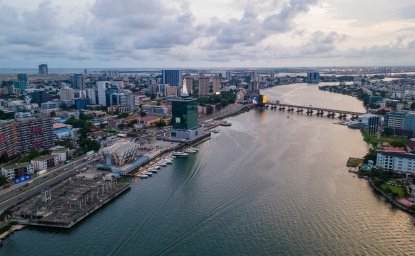
The Innovative Landscape of African Sovereign Wealth Funds
